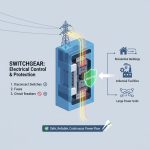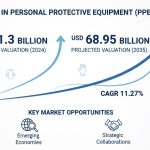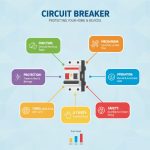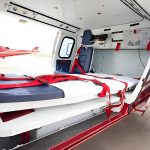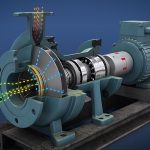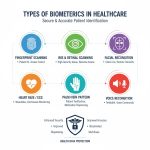The Brain Pacemaker Market: Revolutionary Technology Transforming Neurological Care
The global Brain Pacemaker Market stands at a pivotal juncture in medical technology evolution, valued at USD 3.66 Billion in 2024 and projected to reach USD 6.075 Billion by 2035, representing a steady CAGR of 4.75% throughout the forecast period. This remarkable growth trajectory underscores the increasing recognition of brain pacemakers as transformative therapeutic devices that are fundamentally reshaping how we approach neurological disorders. Brain pacemakers, also known as deep brain stimulators or wireless artifact-free neuro-modulation devices, represent a sophisticated convergence of neuroscience, electrical engineering, and medical innovation. These devices function by delivering carefully calibrated electrical impulses to specific regions of the brain, effectively modulating abnormal neural activity that characterizes various neurological conditions.
The technology behind brain pacemakers has evolved significantly from its early iterations, now incorporating closed-loop systems that can both monitor brain activity and adjust stimulation parameters in real-time. This bidirectional communication between the device and neural tissue represents a quantum leap in personalized neurological care, allowing for dynamic treatment adjustments based on individual patient responses. The wireless and self-contained nature of modern brain pacemakers eliminates many of the limitations associated with earlier generations, offering patients greater freedom of movement and reduced risk of complications from external wiring. As these devices continue to demonstrate efficacy in treating conditions ranging from Parkinson’s disease to treatment-resistant depression, they are increasingly viewed not just as medical devices, but as platforms for understanding and interfacing with the human brain’s complex electrical patterns.
Get a Sample Copy:- https://www.vantagemarketresearch.com/brain-pacemaker-market-1312/request-sample
Key Takeaways
- North America maintains market leadership with 45% revenue share in 2023, driven by advanced healthcare infrastructure and favorable reimbursement policies, while Asia Pacific emerges as the fastest-growing region due to improving healthcare access and rising disposable incomes.
- Dual Channel Brain Pacemakers dominate with 60% market share, offering superior treatment flexibility for complex neurological conditions, though Single Channel devices show faster growth due to cost-effectiveness and technological improvements.
- Parkinson’s Disease applications command 40% of market revenue, reflecting established clinical protocols and proven outcomes, while Obsessive-Compulsive Disorder represents the fastest-growing application segment.
- Technological innovations including wireless systems, closed-loop feedback, and AI-powered programming algorithms drive market expansion and improve patient outcomes.
- Rechargeable brain pacemaker systems gain market share due to reduced long-term costs and decreased need for replacement surgeries.
- Specialized neurology centers and hospitals account for the majority of procedures, emphasizing the importance of expertise concentration for optimal outcomes.
- Regulatory approvals for new indications, particularly in psychiatric applications, create significant growth opportunities.
- Market consolidation through strategic acquisitions continues as major players seek to acquire innovative technologies and expand their product portfolios.
- Increasing focus on minimally invasive approaches and improved surgical techniques reduces procedure risks and expands eligible patient populations.
- Growing emphasis on value-based healthcare models favors brain pacemaker adoption due to demonstrated long-term cost-effectiveness and quality of life improvements.
Brain Pacemaker Market Insights
The Brain Pacemaker Market represents a sophisticated intersection of medical device innovation and neurological therapeutics, characterized by rapid technological advancement and expanding clinical applications. Current market dynamics reflect a growing acceptance of neuromodulation therapies across the medical community, driven by compelling clinical outcomes and an expanding body of research supporting their efficacy. The market’s evolution from a niche segment serving primarily movement disorders to a broader platform addressing various neurological and psychiatric conditions demonstrates the versatility and potential of this technology. Healthcare systems worldwide are increasingly recognizing brain pacemakers as cost-effective long-term solutions, particularly when compared to the cumulative expenses of pharmaceutical management and repeated hospitalizations for chronic neurological conditions.
The technological sophistication of modern brain pacemakers extends far beyond simple electrical stimulation. Contemporary devices incorporate advanced algorithms that can predict and preempt seizures, adaptive stimulation protocols that adjust to circadian rhythms, and connectivity features that enable remote monitoring and programming. This evolution has transformed brain pacemakers from reactive treatment devices to proactive health management systems. The integration of artificial intelligence and machine learning capabilities is beginning to enable these devices to learn from individual patient patterns, optimizing treatment protocols over time. Furthermore, the miniaturization of components and improvements in battery technology have significantly enhanced device longevity and patient comfort, with some modern systems offering rechargeable options that can last for decades with proper maintenance.
The market landscape is also being shaped by evolving reimbursement policies and regulatory frameworks that increasingly recognize the therapeutic value of brain pacemakers. Insurance coverage for these devices has expanded significantly in developed markets, though access disparities remain a challenge in emerging economies. The establishment of specialized centers of excellence for deep brain stimulation has created a network of expertise that facilitates knowledge sharing and best practice development. This infrastructure development is crucial for market expansion, as the successful implementation of brain pacemaker therapy requires not just the device itself, but a comprehensive ecosystem of trained surgeons, neurologists, and support staff capable of managing the complex pre-operative evaluation, surgical implantation, and post-operative programming required for optimal outcomes.
Top Brain Pacemaker Companies
The competitive landscape of the Brain Pacemaker Market showcases a dynamic ecosystem where established medical device giants collaborate and compete with innovative startups to advance the field of neuromodulation. Industry leaders have leveraged their extensive research capabilities, manufacturing expertise, and global distribution networks to maintain dominant market positions while continuously pushing the boundaries of what’s possible in brain stimulation technology. These companies have invested billions in research and development, resulting in increasingly sophisticated devices that offer improved patient outcomes, enhanced programmability, and reduced side effects. The market has witnessed significant consolidation through strategic acquisitions, as larger companies seek to incorporate cutting-edge technologies developed by smaller, specialized firms.
Medtronic, a pioneer in the field, continues to lead market innovation with its comprehensive portfolio of deep brain stimulation systems and its commitment to expanding clinical applications. Abbott Laboratories has emerged as a formidable competitor through strategic acquisitions and the development of directional lead technology that allows for more precise targeting of brain structures. Boston Scientific (having acquired St. Jude Medical’s neuromodulation division) has distinguished itself through innovations in battery technology and user-friendly programming interfaces. NeuroPace stands out with its responsive neurostimulation system, the only FDA-approved closed-loop brain stimulator for epilepsy, representing a paradigm shift in how brain pacemakers can adaptively respond to neural activity.
Emerging players like Synchron and Neuralink are pushing the boundaries of brain-computer interface technology, potentially revolutionizing how brain pacemakers interact with neural tissue. Companies such as Nexeon MedSystems and NeuroSigma are developing novel stimulation paradigms that could expand the therapeutic applications of brain pacemakers. The competitive dynamics are further intensified by companies like Blackrock Neurotech, which focuses on high-resolution neural interfaces, and ImThera Medical, which applies neurostimulation technology to novel indications. This diverse competitive landscape fosters innovation through both competition and collaboration, with companies frequently entering into partnerships to combine complementary technologies and expertise. The result is an accelerating pace of innovation that benefits patients through improved treatment options and outcomes.
Brain Pacemaker Market Segmentation
By Application
- Parkinsons Disease (33.4%)
- Essential Tremor
- Obsessive-Compulsive Disorder
- Epilepsy
- Dystonia
- Alzheimers
By End-User
- Hospitals (49.8%)
- Ambulatory Surgical Centers & Clinics
- Others
The segmentation of the Brain Pacemaker Market reveals a complex tapestry of applications, technologies, and end-user categories that reflect the diverse nature of neurological conditions and treatment approaches. The market’s primary segmentation by application demonstrates the broad therapeutic potential of brain stimulation technology, with Parkinson’s disease representing the largest and most established segment. This dominance stems from the long history of successful outcomes in managing motor symptoms through deep brain stimulation, with thousands of patients worldwide experiencing significant improvements in quality of life. The epilepsy segment represents another major application area, particularly for patients with drug-resistant forms of the condition, where brain pacemakers offer hope for seizure control when pharmaceutical options have been exhausted. The “Others” category encompasses an expanding array of applications, including essential tremor, dystonia, obsessive-compulsive disorder, and chronic pain, each representing significant growth opportunities as clinical evidence accumulates.
From a system type perspective, the market has evolved to offer both rechargeable and non-rechargeable options, with rechargeable systems gaining increasing market share due to their long-term cost-effectiveness and reduced need for replacement surgeries. The technological sophistication of these systems varies considerably, from single-channel devices suitable for targeted stimulation to multi-channel systems capable of addressing complex, distributed neural networks. Advanced features such as directional leads, which allow for more precise targeting of neural structures while minimizing side effects, are becoming increasingly standard in premium device offerings. The emergence of adaptive stimulation algorithms that can adjust parameters based on real-time neural feedback represents the cutting edge of system development, promising more personalized and effective treatment protocols.
End-user segmentation reveals the critical importance of specialized care settings in the successful implementation of brain pacemaker therapy. Hospitals and ambulatory surgery centers remain the primary venues for device implantation, equipped with the sophisticated imaging technology and surgical expertise required for these complex procedures. Specialized neurology centers play an increasingly important role in both patient selection and post-operative management, offering the multidisciplinary expertise necessary for optimal outcomes. Academic and research centers represent a smaller but crucial segment, serving as innovation hubs where new applications are explored and clinical protocols are refined. The growing trend toward centers of excellence for deep brain stimulation reflects the recognition that successful outcomes depend not just on the technology itself, but on the accumulated expertise of specialized teams experienced in patient selection, surgical technique, and device programming.
Regional Analysis
- North America (U.S., Canada, Mexico) (38.9%)
- Europe (Germany, France, U.K., Italy, Spain, Nordic Countries, Benelux Union, Rest of Europe)
- Asia Pacific (China, Japan, India, New Zealand, Australia, South Korea, South-East Asia, Rest of Asia Pacific)
- Latin America (Brazil, Argentina, Rest of Latin America)
- Middle East & Africa
North America’s dominance in the Brain Pacemaker Market reflects a confluence of factors including advanced healthcare infrastructure, high disease awareness, favorable reimbursement policies, and the presence of major market players. The United States, in particular, serves as both a major market and innovation hub, with numerous clinical trials exploring new applications for brain stimulation technology. The region benefits from a well-established network of specialized centers capable of performing complex neurosurgical procedures, supported by comprehensive insurance coverage that makes these expensive treatments accessible to a broader patient population. The regulatory environment, while stringent, provides clear pathways for device approval and post-market surveillance, creating a stable business environment for manufacturers. Canada’s universal healthcare system has also embraced brain pacemaker technology, though with more selective criteria for patient eligibility.
Europe represents the second-largest market, characterized by sophisticated healthcare systems and strong clinical research traditions in neurology. Countries like Germany, France, and the United Kingdom have been at the forefront of adopting brain pacemaker technology, with well-established treatment protocols and reimbursement frameworks. The European market benefits from cross-border collaboration in clinical research and the harmonized regulatory framework provided by the CE marking system. However, significant variations exist between countries in terms of access to treatment, with Northern and Western European nations generally providing broader coverage compared to Eastern European countries. The region’s aging population and high prevalence of neurological disorders continue to drive market growth, though budget constraints in some healthcare systems pose challenges.
The Asia Pacific region emerges as the fastest-growing market, driven by improving healthcare infrastructure, rising disposable incomes, and increasing awareness of advanced treatment options. Countries like Japan and South Korea lead in technology adoption, with sophisticated healthcare systems comparable to Western standards. China and India represent massive potential markets, though currently limited by factors including cost barriers, limited specialized expertise, and underdeveloped reimbursement systems. The region is witnessing rapid development of neurosurgical capabilities, often through partnerships with Western medical institutions. Latin America and the Middle East & Africa regions, while currently representing smaller market shares, show promising growth potential as healthcare systems modernize and medical tourism brings advanced treatments to select centers. These regions face unique challenges including limited access to specialized care, cost constraints, and the need for extensive healthcare professional training, but government initiatives to improve neurological care and partnerships with international organizations are gradually addressing these barriers.
Brain Pacemaker Market Dynamics
The brain pacemaker market operates within a complex ecosystem of technological innovation, clinical advancement, and evolving healthcare delivery models. The fundamental dynamics driving this market reflect broader trends in personalized medicine, where treatments are increasingly tailored to individual patient characteristics and disease profiles. The convergence of neuroscience research, bioengineering capabilities, and digital health technologies creates a fertile environment for continued innovation in brain stimulation therapies. Market dynamics are significantly influenced by the growing body of clinical evidence supporting the efficacy of brain pacemakers across an expanding range of indications, from well-established applications in movement disorders to emerging uses in psychiatric conditions and chronic pain management. This evidence-based expansion of indications represents a key growth driver, as each new approved application opens substantial market opportunities.
The interplay between technological advancement and clinical need creates a virtuous cycle of innovation in the brain pacemaker market. As devices become more sophisticated, incorporating features like directional stimulation, closed-loop feedback, and remote programming capabilities, they enable more precise and effective treatments. This technological progress, in turn, encourages clinicians to explore new therapeutic applications, generating data that further refines device design and programming protocols. The market also benefits from the growing integration of brain pacemakers with digital health ecosystems, enabling remote monitoring, data analytics, and telemedicine consultations that improve patient care while reducing healthcare system burdens. The increasing focus on value-based healthcare models aligns well with brain pacemaker therapy, as these devices often provide long-term symptom control that reduces overall healthcare utilization and improves patient productivity.
Market Drivers
The expansion of the brain pacemaker market is propelled by several compelling drivers that reflect both demographic trends and technological capabilities. The global aging population represents perhaps the most significant driver, as age-related neurological conditions such as Parkinson’s disease and essential tremor become increasingly prevalent. The World Health Organization projects that the number of people aged 60 and above will double by 2050, creating an expanding patient pool for brain pacemaker therapies. This demographic shift is particularly pronounced in developed markets, where longer life expectancies combine with higher diagnosis rates to create substantial demand for advanced neurological treatments. Additionally, the growing prevalence of neurological disorders across all age groups, partly attributed to improved diagnostic capabilities and increased awareness, expands the addressable market for brain stimulation technologies.
Technological innovations continue to drive market growth by improving device performance, expanding therapeutic applications, and enhancing patient outcomes. The development of directional lead technology allows for more precise targeting of neural structures while minimizing side effects, making brain pacemaker therapy viable for patients who might not have tolerated earlier-generation devices. Advances in battery technology, including rechargeable systems with decades-long lifespans, reduce the need for replacement surgeries and lower long-term treatment costs. The integration of machine learning algorithms enables adaptive stimulation protocols that optimize treatment parameters based on individual patient responses, improving efficacy while reducing programming complexity. Furthermore, the miniaturization of device components enhances patient comfort and reduces surgical risks, making the therapy more appealing to both patients and clinicians.
The evolving healthcare landscape, characterized by increasing focus on quality of life and functional outcomes, creates a favorable environment for brain pacemaker adoption. Healthcare systems increasingly recognize that while these devices require significant upfront investment, they often prove cost-effective over the long term by reducing medication costs, hospitalizations, and caregiver burden. The growing emphasis on patient-centered care aligns well with brain pacemaker therapy, which often provides dramatic improvements in daily functioning and independence. Additionally, expanding insurance coverage and reimbursement for brain pacemaker procedures in many markets reduces financial barriers to access, though significant disparities remain between regions and healthcare systems.
Market Restraints
Despite the promising growth trajectory, the brain pacemaker market faces significant restraints that temper its expansion potential. The high cost of devices and associated procedures remains a primary barrier to widespread adoption, with total treatment costs often exceeding $100,000 when including pre-operative evaluation, surgery, device costs, and post-operative programming. These substantial expenses create access disparities, limiting treatment to patients with comprehensive insurance coverage or significant financial resources. Even in markets with established reimbursement frameworks, stringent eligibility criteria often restrict access to patients with severe symptoms who have exhausted other treatment options. The cost barrier is particularly acute in emerging markets, where limited healthcare budgets and underdeveloped insurance systems make brain pacemaker therapy accessible only to a small affluent segment of the population.
The complexity of brain pacemaker therapy presents another significant restraint, requiring specialized expertise that limits the number of centers capable of offering treatment. Successful outcomes depend on accurate patient selection, precise surgical placement, and expert post-operative programming, all of which require extensive training and experience. The shortage of qualified neurosurgeons and neurologists trained in deep brain stimulation techniques creates bottlenecks in many healthcare systems, leading to long waiting times and geographic disparities in access. The learning curve associated with these procedures means that even experienced centers may have variable outcomes, potentially discouraging referrals and limiting market growth. Additionally, the need for ongoing device management and programming requires sustained access to specialized care, which can be challenging for patients in rural or underserved areas.
Safety concerns and the invasive nature of brain pacemaker implantation continue to influence patient and physician decision-making. While serious complications are relatively rare in experienced hands, the potential for surgical risks including infection, bleeding, and hardware-related problems cannot be eliminated entirely. The irreversible nature of electrode placement and potential for long-term complications create hesitation among some patients and referring physicians. Furthermore, the variable response rates observed across different conditions and individual patients introduce uncertainty into treatment decisions. Some patients may experience limited benefit or develop tolerance to stimulation over time, requiring complex reprogramming or additional interventions. These factors, combined with the availability of less invasive treatment alternatives for some conditions, can lead to conservative treatment approaches that delay or prevent brain pacemaker consideration.
Market Opportunities
The brain pacemaker market stands at the threshold of significant expansion opportunities driven by technological convergence and evolving understanding of brain function. The emerging field of brain-computer interfaces represents a transformative opportunity, potentially enabling brain pacemakers to not only treat neurological conditions but also restore lost functions and enhance human capabilities. Companies developing next-generation neural interfaces are exploring applications ranging from direct neural control of prosthetic limbs to restoration of sensory functions in patients with spinal cord injuries. The integration of artificial intelligence and machine learning algorithms promises to revolutionize device programming and optimization, potentially enabling fully autonomous systems that continuously adapt to patient needs without manual intervention. These technological advances could dramatically expand the addressable market beyond traditional neurological applications to include a broader range of neurological and psychiatric conditions.
The growing recognition of brain pacemakers as viable treatments for psychiatric disorders opens substantial new market opportunities. Clinical trials demonstrating efficacy in treatment-resistant depression, obsessive-compulsive disorder, and post-traumatic stress disorder suggest that brain stimulation could address the significant unmet need in mental health treatment. With mental health disorders affecting hundreds of millions globally and conventional treatments failing in a substantial proportion of patients, the potential market for psychiatric applications of brain pacemakers is enormous. The development of less invasive stimulation techniques and improved understanding of neural circuits underlying psychiatric conditions could accelerate adoption in this field. Additionally, the exploration of brain pacemakers for addiction treatment, eating disorders, and other behavioral conditions represents frontier areas with significant commercial potential.
Geographic expansion into emerging markets presents another major opportunity for market growth. As healthcare infrastructure improves in regions such as Asia Pacific, Latin America, and the Middle East, the demand for advanced neurological treatments is expected to surge. Medical tourism already brings patients from these regions to established treatment centers, indicating latent demand that could be captured through local capacity building. Partnerships between Western medical device companies and local healthcare providers to establish centers of excellence could accelerate market penetration in these regions. The development of cost-optimized device variants specifically designed for resource-constrained settings could further expand access while maintaining therapeutic efficacy. Additionally, the growing middle class in emerging economies creates a expanding population capable of affording advanced medical treatments, either through improving insurance coverage or out-of-pocket payments.
Market Challenges
The brain pacemaker market confronts formidable challenges that require strategic navigation for sustained growth. The regulatory landscape presents ongoing complexities, with different regions maintaining varying approval requirements and post-market surveillance obligations. The need for extensive clinical trials to demonstrate safety and efficacy for new indications requires substantial investment and time, potentially delaying market entry for innovative applications. Regulatory bodies’ increasing focus on long-term outcomes and real-world evidence creates additional data collection burdens for manufacturers. The evolving regulatory environment around software-based medical devices and artificial intelligence algorithms adds another layer of complexity, as traditional regulatory frameworks struggle to keep pace with technological innovation. Companies must balance the drive for innovation with the need to maintain compliance across multiple jurisdictions, requiring sophisticated regulatory strategies and substantial resources.
The challenge of demonstrating value in increasingly cost-conscious healthcare systems requires comprehensive health economic evidence beyond clinical efficacy. Payers demand robust data on quality-adjusted life years, long-term cost-effectiveness, and comparative effectiveness versus alternative treatments. The high upfront costs of brain pacemaker therapy necessitate compelling evidence of long-term benefits to secure favorable reimbursement decisions. The variability in treatment response across patients complicates value demonstrations, as health systems seek predictable outcomes to justify investments. Additionally, the need to demonstrate value not just for the device itself but for the entire care pathway, including surgical expertise and ongoing management, requires complex economic modeling and real-world evidence generation. Companies must invest in health economic research and develop innovative pricing models that align with value-based healthcare trends.
The technical challenges of advancing brain pacemaker technology while maintaining safety and reliability present ongoing obstacles. The complexity of the human brain and individual variability in neural anatomy and function make it difficult to develop one-size-fits-all solutions. The challenge of achieving precise, stable electrode placement in deep brain structures requires continued innovation in surgical techniques and imaging guidance. Battery life limitations, while improving, still necessitate replacement procedures that carry risks and costs. The development of truly closed-loop systems that can reliably detect and respond to neural states remains technically challenging, requiring advances in signal processing, algorithm development, and miniaturized electronics. Furthermore, concerns about cybersecurity in connected medical devices add new technical requirements and potential vulnerabilities that must be addressed. These technical challenges require sustained research investment and multidisciplinary collaboration between engineers, neuroscientists, and clinicians.
FAQs –
- What is the projected market size of the Brain Pacemaker Market by 2035 and what is driving this growth?
- Which neurological conditions are the primary applications for brain pacemakers and which segment holds the largest market share?
- Who are the leading companies in the Brain Pacemaker Market and what competitive strategies are they employing?
- What is the difference between rechargeable and non-rechargeable brain pacemakers, and which type dominates the market?
- Which geographic region leads the Brain Pacemaker Market and why is Asia Pacific the fastest-growing region?
- What are the major technological innovations shaping the future of brain pacemakers?
- What are the primary cost barriers and reimbursement challenges facing the Brain Pacemaker Market?
- How are brain pacemakers being explored for psychiatric applications beyond traditional neurological disorders?
- What role do specialized neurology centers play in the Brain Pacemaker Market ecosystem?
- What are the key regulatory and safety challenges that could impact market growth through 2035?
![[Market Research Reports] – Research Google News Blog | VMR.Biz](https://www.vmr.biz/wp-content/uploads/2022/12/logo-removebg-preview.png)
